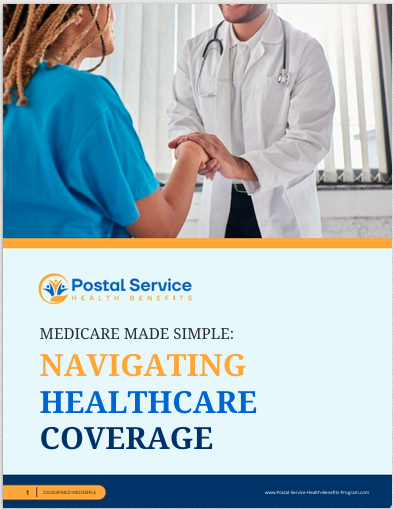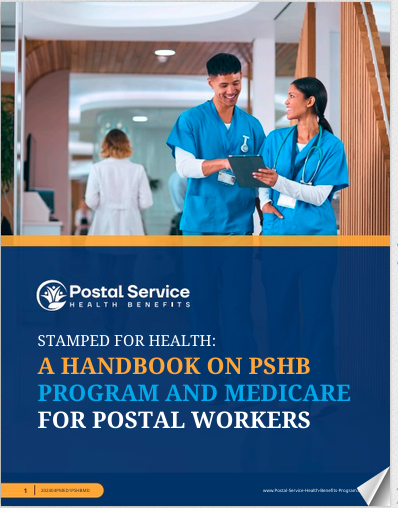Key Takeaways
-
Low-deductible and high-deductible PSHB plans cater to different healthcare needs and budgets, so understanding your usage patterns is key.
-
High-deductible plans can offer significant savings for healthy individuals, but low-deductible plans may be better if you frequently use healthcare services.
Decoding PSHB Deductibles
When it comes to the Postal Service Health Benefits (PSHB) program, deductibles are an essential piece of the puzzle. A deductible is the amount you’re responsible for paying out-of-pocket for covered healthcare services before your plan starts to contribute.
PSHB offers two primary deductible options—low-deductible and high-deductible plans. Choosing between these options depends on your healthcare needs, financial situation, and preferences. Let’s break down these plans to help you make an informed decision.
Low-Deductible Plans: What’s the Appeal?
Low-deductible plans have deductibles that range from $350 to $500 for in-network services. These plans are popular because they minimize upfront costs when you access healthcare. Once your deductible is met, your plan begins to cover a significant portion of your medical expenses, often with lower coinsurance or copayment rates.
Benefits of Low-Deductible Plans
-
Predictability: You’ll have lower upfront out-of-pocket costs, which makes budgeting for medical expenses easier.
-
Accessibility: These plans are ideal if you need frequent visits to primary care physicians or specialists, or if you have ongoing medical conditions.
-
Lower Risk: You won’t face significant financial burdens when unexpected medical issues arise.
Who Should Choose a Low-Deductible Plan?
Low-deductible plans work best for those who anticipate moderate to high healthcare usage. This includes individuals with chronic conditions, families with children, or anyone expecting medical treatments in the near future.
High-Deductible Plans: A Different Approach
High-deductible plans under the PSHB program come with deductibles ranging from $1,500 to $2,000 for in-network services. These plans offer lower premiums but require you to pay more upfront before the plan kicks in.
Benefits of High-Deductible Plans
-
Cost Savings on Premiums: You’ll pay less each month, which can be appealing if you’re generally healthy.
-
Health Savings Accounts (HSAs): These plans are compatible with HSAs, allowing you to set aside pre-tax money for healthcare expenses. This can offset higher deductibles while giving you tax advantages.
-
Encourages Smart Spending: High-deductible plans encourage you to shop for cost-effective healthcare services, potentially reducing overall healthcare expenses.
Who Should Choose a High-Deductible Plan?
If you’re healthy, rarely visit the doctor, or want to save on premiums, a high-deductible plan might be your best option. They’re also a good fit for individuals who are comfortable managing healthcare expenses through an HSA.
Comparing Out-of-Pocket Costs
Out-of-pocket costs include deductibles, copayments, coinsurance, and any other expenses you’re responsible for paying. Here’s how low-deductible and high-deductible plans stack up:
-
Low-Deductible Plans: Typically feature lower copayments and coinsurance rates. For example, primary care visits might have a $20-$40 copayment, while specialist visits cost $30-$60.
-
High-Deductible Plans: Higher initial out-of-pocket expenses until the deductible is met. However, once you reach the deductible, coinsurance rates often match or are close to those in low-deductible plans.
Coinsurance and Copayments: Breaking It Down
Both types of plans involve coinsurance and copayments, but the amounts vary:
-
Coinsurance: After meeting your deductible, you’ll pay a percentage of the remaining costs. Low-deductible plans may charge 10%-30% for in-network services, while high-deductible plans range from 30%-40%.
-
Copayments: Flat fees for specific services like doctor visits or prescription drugs. These are generally lower in low-deductible plans.
Balancing Deductibles with Premiums
Choosing the right PSHB plan involves weighing deductibles against premiums. Low-deductible plans come with higher monthly premiums, ensuring predictable healthcare costs. In contrast, high-deductible plans have lower premiums but require careful budgeting for unexpected medical expenses.
Key Considerations
-
Frequency of Medical Visits: If you visit the doctor frequently or require specialist care, a low-deductible plan will save you money in the long run.
-
Emergency Preparedness: High-deductible plans might leave you with hefty bills in emergencies unless you’ve saved enough in an HSA.
-
Family Needs: Families with children often prefer low-deductible plans due to frequent pediatric visits and possible emergencies.
Leveraging PSHB Benefits for Savings
Both low-deductible and high-deductible plans include preventive care services at no additional cost. This means you can access annual check-ups, immunizations, and screenings without worrying about deductibles or copayments.
Tips to Maximize Savings
-
Review Network Providers: Sticking to in-network providers minimizes out-of-pocket costs.
-
Use Preventive Services: Take full advantage of free preventive care to catch potential health issues early.
-
Understand Prescription Coverage: Evaluate whether your medications are covered and what tier they fall under.
Flexibility with Health Savings Accounts (HSAs)
High-deductible plans often come with the added benefit of HSAs. These accounts allow you to:
-
Save pre-tax money for healthcare expenses.
-
Earn tax-free interest on unused funds.
-
Roll over unused balances year after year, building a reserve for future needs.
Low-deductible plans, however, don’t offer HSA eligibility, which is something to consider if you prefer this savings option.
Making the Final Choice
Your choice between low-deductible and high-deductible PSHB plans should reflect your healthcare usage patterns, financial goals, and comfort level with risk. Here are some steps to guide your decision:
-
Assess Your Health Needs: Consider your current health, any ongoing treatments, and the likelihood of needing medical care in the upcoming year.
-
Calculate Potential Costs: Compare premiums, deductibles, and other out-of-pocket expenses for each plan.
-
Plan for the Unexpected: Ensure you’re financially prepared for emergencies, especially if choosing a high-deductible plan.
-
Consider Long-Term Goals: If you value HSAs for long-term savings, a high-deductible plan might be worth the trade-off.
Why Deductible Choice Matters
The deductible you choose can significantly impact your healthcare experience. By understanding the nuances of low-deductible and high-deductible plans, you can strike the right balance between cost and coverage.
-
Low-Deductible Plans: Ideal for those needing consistent care and prefer predictability.
-
High-Deductible Plans: Best for healthy individuals prioritizing premium savings and HSA benefits.
Making the right choice ensures you’re not overpaying for unused benefits or underinsured when unexpected medical needs arise.
Tailoring PSHB Plans to Your Needs
PSHB plans are designed to be flexible, accommodating various healthcare and financial preferences. Whether you lean toward a low-deductible plan for peace of mind or a high-deductible plan for premium savings, the key is to evaluate your priorities carefully. With the right approach, you can optimize your PSHB benefits and maintain control over your healthcare spending.
Navigating PSHB in 2025
In 2025, PSHB plans continue to offer robust options tailored to postal workers and their families. By staying informed and evaluating your healthcare needs regularly, you can ensure your chosen plan aligns with your current situation. Don’t hesitate to explore resources and seek clarification to make the most of your benefits.
Making the Most of Your PSHB Coverage
Understanding the differences between low-deductible and high-deductible plans allows you to take control of your healthcare costs. Remember, your health is an investment, and choosing the right plan ensures you’re financially and medically prepared for the year ahead.







